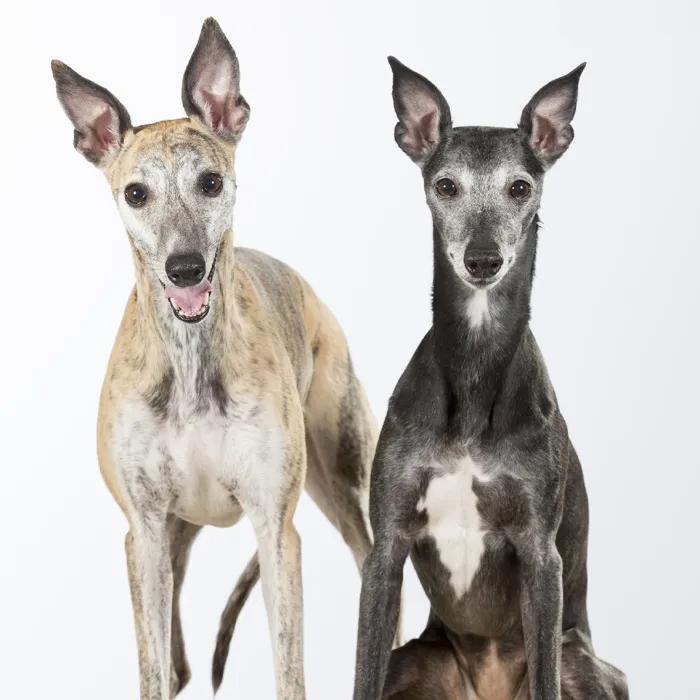Whippet

The sleek, sweet-faced Whippet, the “Poor Man’s Racehorse,” is lightning quick. He is an amiable, dignified, and gentle soul, but give him something to chase and he’s all business. The name Whippet is synonymous with streamlined grace.

Ask About Whippet ?
Breed Traits
General Appearance
A medium size sighthound giving the appearance of elegance and fitness, denoting great speed, power and balance without coarseness. A true sporting hound that covers a maximum of distance with a minimum of lost motion. Should convey an impression of beautifully balanced muscular power and strength, combined with great elegance and grace of outline. Symmetry of outline, muscular development and powerful gait are the main considerations; the dog being built for speed and work, all forms of exaggeration should be avoided.
Size, Proportion, Substance
Head
Neck, Topline, Body
Forequarters
Hindquarters
Coat
Color
Gait
Temperament
Disqualifications
Group
Hound
About
History
Standard
Nutrition
Grooming
Exercise
Training
Health
All pets have found there homes! Sign up to be notified when new pets are added so you don't miss out.


